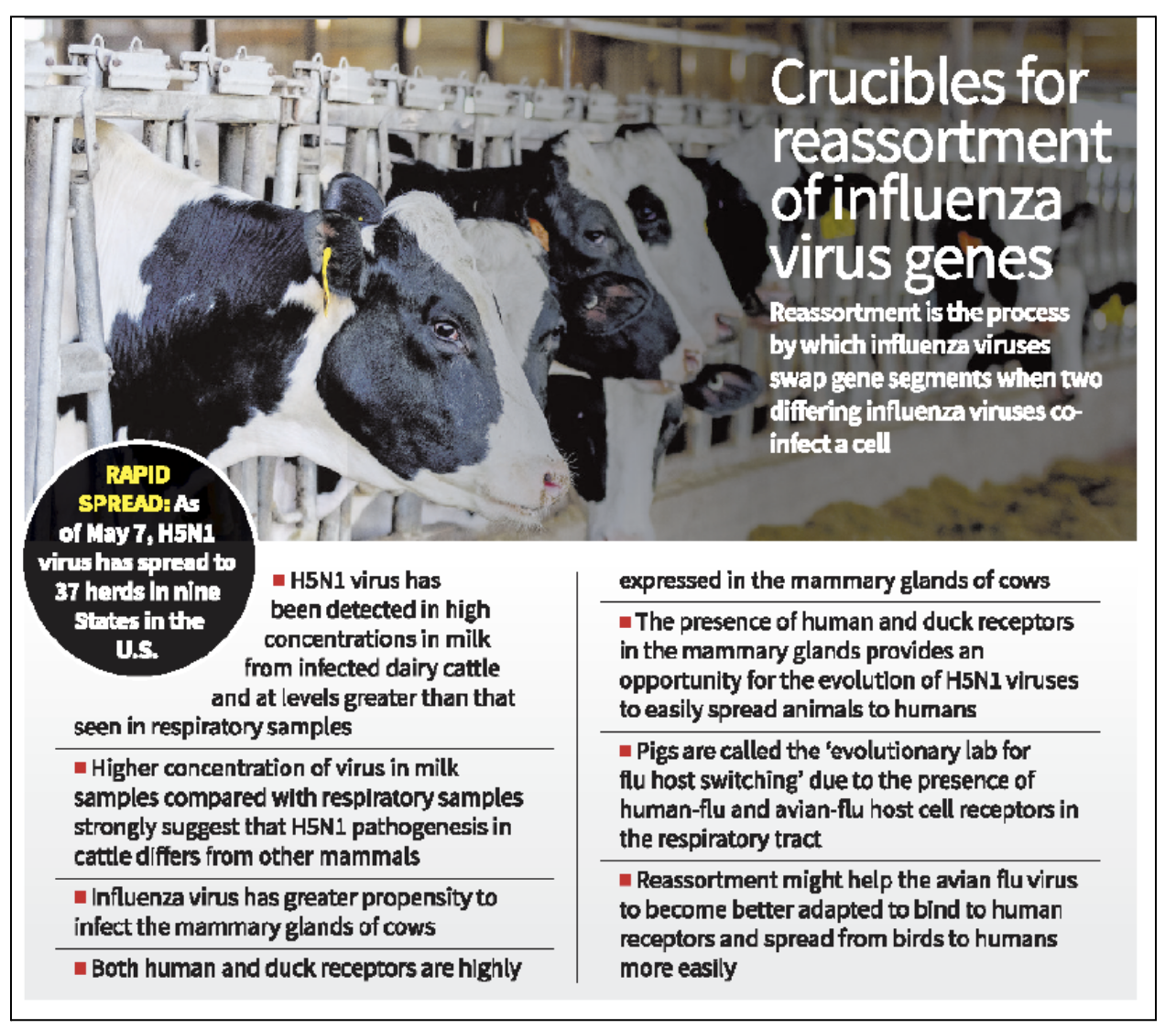News Excerpt:
The U.S. FDA has said that in a nationally representative commercial milk sampling study of pasteurised milk, about one in five of the retail samples tested positive for bird flu viral fragments.
Bird flu detection in new hosts:
- For years, H5N1, or highly pathogenic avian influenza, has been primarily confined to the bird population.
- But it has recently begun to infect a growing number of mammals, suggesting that the virus might be adapting and moving closer to becoming a human pathogen.
- In a recent report, the H5N1 virus was detected in “high concentrations in milk from infected dairy cattle and at levels greater than that seen in respiratory samples.”
Probable reasons for the dairy cattle milk containing high concentrations of H5N1 virus fragments:
- The propensity of the virus to infect the mammary glands of cows as a previous study had found.
- On evaluating the expression of H5N1 receptors in the mammary gland, respiratory tract and cerebrum of cattle, the researchers found both the human and the duck receptors to be highly expressed in the mammary glands.
- In the mammary gland, the human receptors and the duck receptors were found to be widely distributed in the alveoli but not in the ducts.
- Chicken-type influenza receptors were common in the cow respiratory tract.
- The local viral replication in the mammary glands of cows as H5N1 has a high affinity for the receptor.
Impact on human infection of H5N1:
- Cows might be one of the worst possible animal reservoirs for influenza because of their sheer number and the degree to which humans interact with them.
- Culling poultry has curbed previous bird flu outbreaks but it isn’t a viable option for cattle.
- The animals are too valuable and, unlike birds, don’t seem to die from the infection.
- H5N1 could even become endemic in cows while other strains related to H5N1 are already endemic in chickens and pigs in some parts of the world.
Possible solution:
- If the virus is airborne, vaccinating cows might be an option.
- H5N1 vaccines have not yet been used in US cattle. But influenza vaccines have proved effective in pigs and poultry, and researchers are beginning to test them against the H5N1 strain infecting dairy herds.

|
H5N1 Influenza:
|


